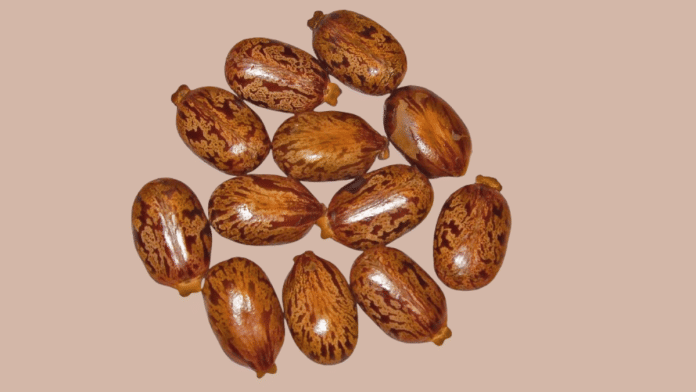New Delhi: The Gujarat Police’s Anti-Terrorism Squad (ATS) has allegedly recovered four kilograms of castor-bean mash from a Hyderabad doctor arrested over suspected terror links on 7 November.
The ATS suspects that the doctor had procured the castor-bean mash to extract the deadly poison, ricin. He is also alleged to have surveyed crowded food markets in Delhi and Ahmedabad as sites for potential attacks.
Ricin has a dark history, having been used previously in high-profile assassination attempts, as well as a bioterrorism plot. It is classified as a Grade B biological weapon agent by the US’s Centers for Disease Control and Prevention (CDC), and a Schedule 1 chemical warfare agent under the Chemical Weapons Convention.
In popular media, ricin finds mention in the Netflix series ‘Breaking Bad’ in which Walter White (essayed by actor Bryan Cranston) gives a cigarette with a vial of ricin poison to Jesse Pinkman (actor Aaron Paul) for killing their crime boss.
So, what makes ricin one of the most potent poisons known to humankind? ThePrint explains:
Also Read: India’s services exports touching $400 bn—a quiet engine offsetting trade deficit
What is ricin, why is it so deadly?
Ricin is the byproduct that remains after oil has been extracted from castor seeds. Though the toxicity of castor seeds was well-known, ricin was isolated first by German scientist Peter Hermann Stillmark in 1888. Over the years, its use as a biological weapon was considered by Americans, British and French scientists.
A toxic glycoprotein, ricin is deadly as it shuts down protein synthesis in mammalian cells it comes in contact with, causing cell death.
Poisoning can take place by inhalation of liquid or powdered ricin released into the air.
What are the symptoms of ricin poisoning & is there a cure?
When ricin is inhaled, it irritates the airways and lungs. Early symptoms can appear within hours and include fever, cough, chest tightness, nausea, and difficulty in breathing. As the toxin progresses, fluid can accumulate in the lungs (pulmonary edema), making breathing increasingly difficult and sometimes causing the skin to appear blue. If exposure is severe and untreated, this can lead to low blood pressure, respiratory failure, and even death.
Ingestion of a substantial dose of ricin can trigger intense vomiting and diarrhea, which may become bloody. As the body loses fluids, severe dehydration and a drop in blood pressure can develop. Additional effects may include hallucinations, seizures, and the presence of blood in the urine. Over the following days, major organs such as the liver and kidneys can fail, which can be fatal.
No cure exists for ricin, according to the CDC. “The most important thing to do is avoid ricin exposure in the first place. If you cannot avoid exposure, get the ricin off or out of the body as quickly as possible,” it says.
Ricin letters & umbrella
Bulgarian dissident Georgi Markov was assassinated in London in 1978 after he was stabbed in the leg with a modified umbrella containing ricin. Three years on, Central Intelligence Agency (CIA) agent Boris Korczak survived a ricin pellet assassination attempt, reportedly linked to the Soviet Union’s intelligence and security agency KGB.
Mississippi resident James Everett Dutschke was sentenced to 25 years in prison in 2014 for sending letters dusted with ricin to then US President Barack Obama among others.
Six years later, Pascale Cecile Veronique Ferrier, a dual citizen of Canada and France, tried the same modus operandi but failed in her attempt to poison then US President Donald Trump and eight Texas law enforcement officials. The act landed her a jail term of nearly 22 years.
Banudas Athreya is a TPSJ alum, currently interning with ThePrint.
(Edited by Tony Rai)
Also Read: Vodafone Idea AGR case, explained: SC breather to cash-strapped telco & what it means for industry






